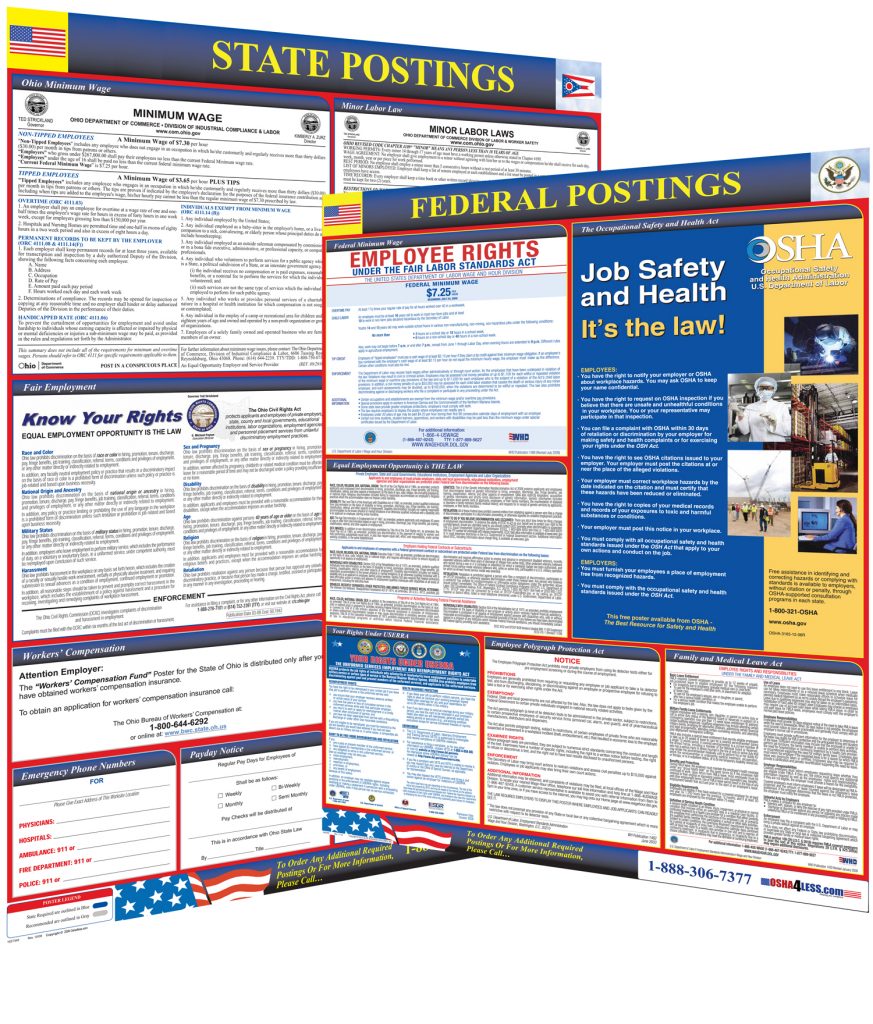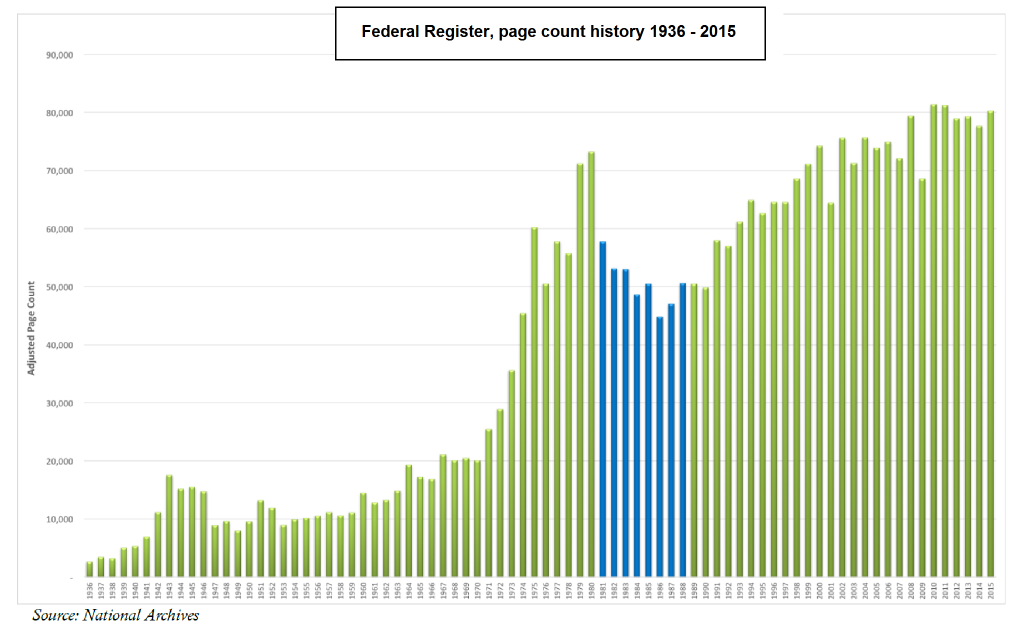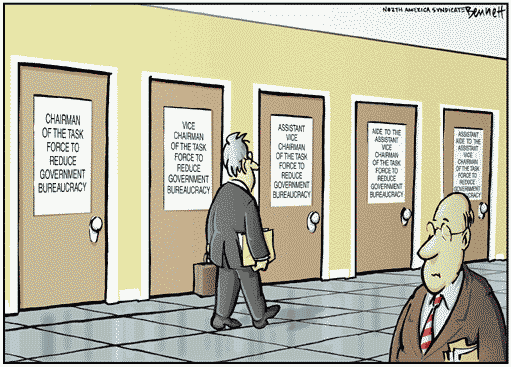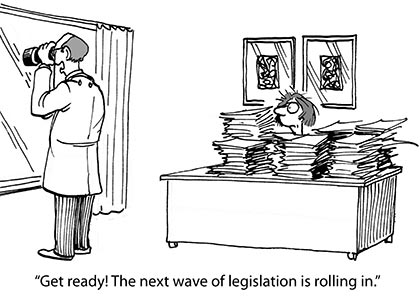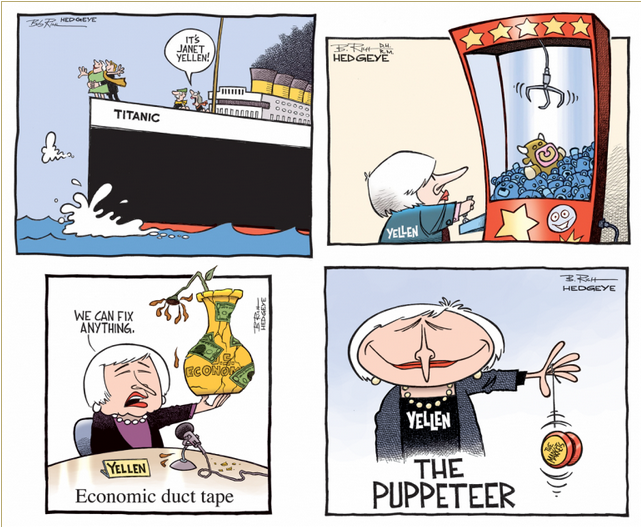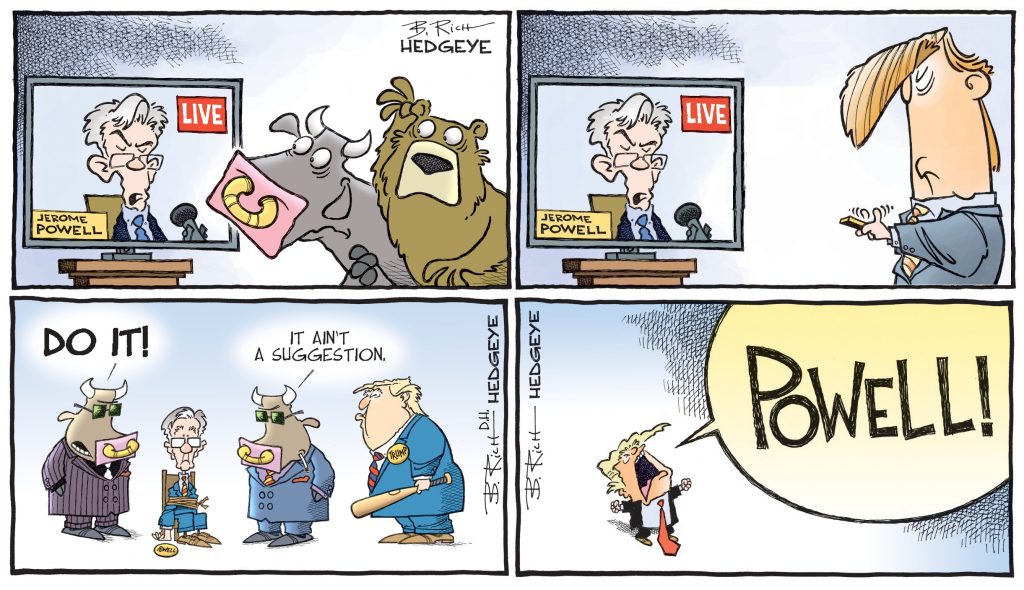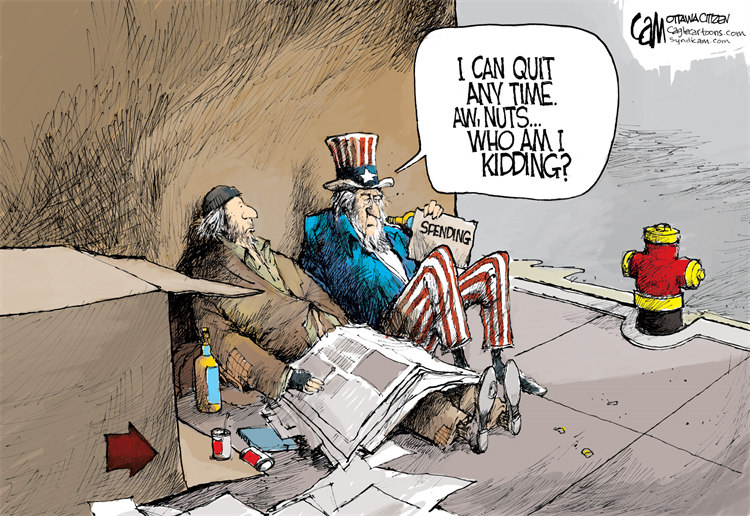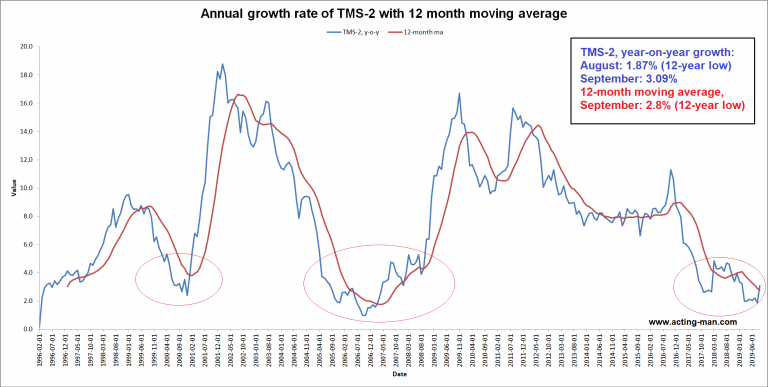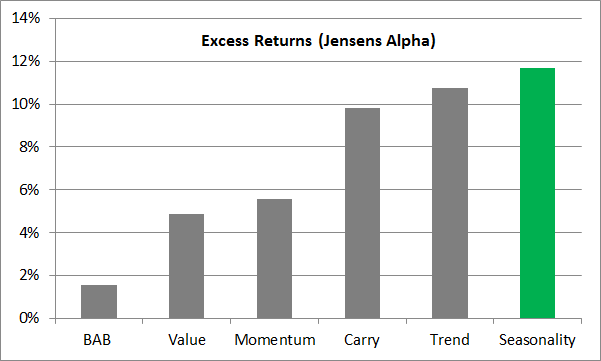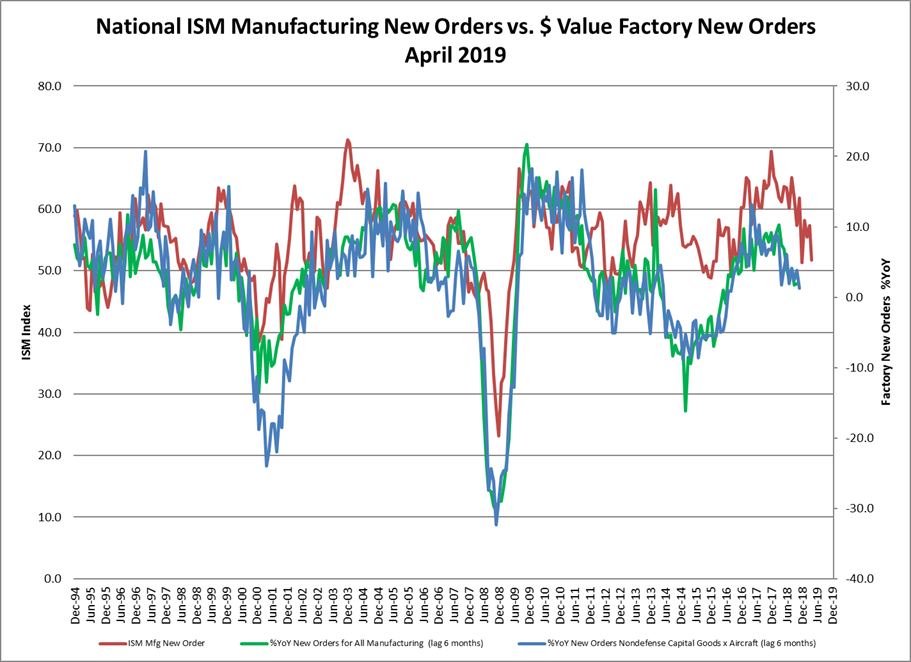Gross Regulatory OverburdenCorporate life in America these days is fraught with tedium. First the MBAs imposed their silly six sigma processes and reduced workers to mere widgets. Then the regulators went through and squashed out any fun that remained. Gone are the days when shrewd eccentrics could get rich using techno-babble to hawk the Turbo Encabulator. Alas, there are rules and regulations stymieing all creativity. In fact, as a matter of law, such restrictions are shoved in the workers’ face each morning as they fill up their morning cup of coffee. |
Bud Haggert presents the ground-breaking Turbo Encabulator! This thing has practically everything. Unilateral phase detractors! Automatically synchronized cardinal grammeters! Need farescent skor motion? No problem! Now you can finally do it in conjunction with a drawn reciprocation dingle arm to reduce soinasodial repleneration! |
| By our rough calculation the break room metric currently indicates an economy that’s grossly overburdened by regulation. The break room metric, if you’ve never heard of it, is the ratio of wall space in office break rooms that is utilized by mandatory federal and state regulatory postings. Anything above 10 percent utilization represents gross regulatory overburden.
No doubt, office break rooms across America are nearly out of wall space. Mandatory OSHA postings fill the voids. Other postings include: Industrial Relations, Fair Labor Standard Act, Family and Medical Leave Act, Equal Opportunity, Anti-Discrimination and Harassment, Safety and Health Relations, and many, many more. For example, requisite Employee Rights, under something called the National Labor Relations Act, are wallpapered up to inform workers of their right to organize a union. For whatever reason, the massive poster specifies: “This is an official Government Notice and must not be defaced by anyone.” On top of that, there are a variety of whistleblower reporting hotlines posted that tell one how to safely rat out their employer for fraud, waste and abuse and human trafficking, among other things. |
|
A Giant Money SuckIn 2016 the Federal Register grew to a new record high of 81,640 pages of rules and regulations. Presumably, each one of these rules and regulations has a useful purpose and intent. Why else would they come into existence? But the truth is most of them are far from useful. For instance, the paper they’re written on could be better used as bird cage liner. Plus, over time, they’ll metastasize into a bloated mass like all prior laws have. The history of pages in the Federal Register. The period high-lighted in blue depicts the Reagan administration’s reign – this was the only time in the post WW2 era – apart from the dismantling of FDR’s “New Deal” excesses by Congress right after the war – in which the number of regulations actually declined noticeably over an extended time span. The raw numbers actually mask the amount of damage done under Obama. As Wayne Crews points out in this report: “Obama’s page counts are the highest in history, accounting for six of the seven highest ever. The Federal Register reached 80,260 pages in 2015, its third highest total ever. That year, there were 24,694 Federal Register pages devoted to final rules. The record high was 26,417 in 2013. Worse, the Obama administration has sought to avoid the public scrutiny inherent in agency rulemaking by expanding its use of pen and phone edicts, such as memoranda, bulletins, and executive orders.” Fewer than one percent of the new regulations imposed under the Obama administration have been subjected to a cost-benefit analysis. Regulations cost the US economy trillions of dollars every year. |
Federal Register |
| Remember, laws and regulations also generally come with a unique department or agency to enforce them. These agencies are staffed with government workers. What it is exactly these government workers do all day is unclear.
We suppose they show up to work, send emails, process paper work, update compliance files, and prepare monthly and quarterly reports. Some of them even enter data into spreadsheets and query out pie graphs for power-point presentations. All of them count down the days until their government funded retirements kick in. As far as we can tell, regulatory agency staffers don’t contribute to the productive economy. Rather, they subtract from it. They slurp and suck money into a giant toilet bowl vortex and flush it down the drain. Then they do it again. This being the case, what would happen if some of these laws, and the corresponding government jobs they represent, were disappeared? Would anyone care? Would everything run amok? |
|
Putting an End to the Regulation IndustryOf course, according to regulators everything would fall into disorder. Moreover, eliminating these laws would also affect the regulator’s happiness and purpose in life. They’ve even said so:
Marthe Kent (middle): born to regulate and regulate and regulate… it’s thrilling and it makes her happy! How can anyone possibly begrudge this kindly woman her happiness? Indeed, one of the more promising prospects of a Trump Presidency is the wholesale dismantling of federal regulations. Several months ago Trump said:
And just last month Trump said, “70 percent of regulations can go.” This sounds about right, wouldn’t you say? But where to begin… The Hill recently identified 14 regulations Trump should set his sights on. These include the Environmental Protection Agency’s Clean Power Plan and the Waters of the United States rule, parts of Dodd-Frank, the Department of Labor’s “overtime rule,” Obamacare, and others. |
We can’t wait. Completing regulatory forms and documentation is the work of ultimate boredom. Besides, in addition to being a complete money suck, regulatory compliance takes all the fun out of doing good, profitable work.
Maybe Trump won’t be able to Make America Great Again. But a secondary benefit of cutting back on the extreme excess of regulations is that it will go a long way to make work fun again. At the end of the day we may find that both objectives are one and the same.
Chart by: Competitive Enterprise Institute
Chart and image captions by PT
Full story here Are you the author? Previous post See more for Next post
Tags: newslettersent,On Economy









